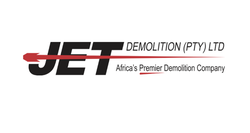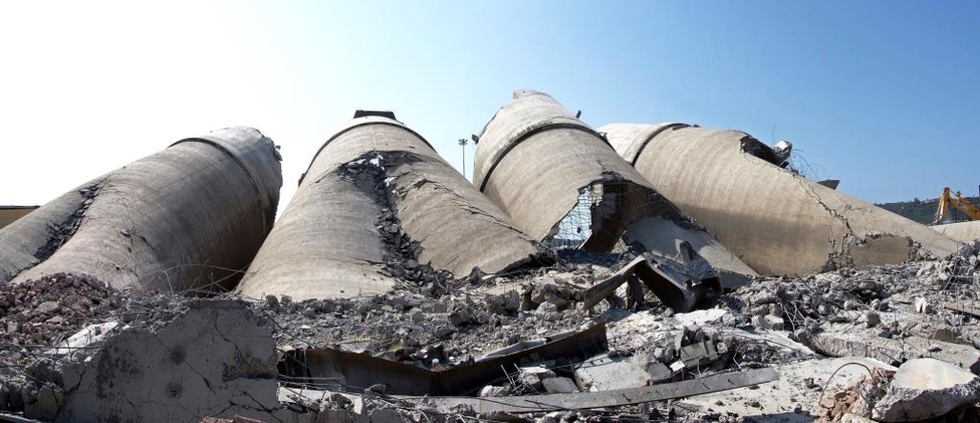Bridging the gap between consultants and contractors
| Bridging the gap between consultants and contractors_approved | 60.5 KB | Download | |
| Jet Demolition Contracts Manager Kate Bester (NDip Civil Engineering - PMP) | 395.02 KB | Download | |
| Controlled implosion of redundant cooling towers | 2.33 MB | Download | |
| Demolition provides a continuous challenge in terms of safety, production, and cost-efficiency | 2.06 MB | Download | |
| Jet Demolition has over 60 specialised demolition machines in its fleet | 3.43 MB | Download |
“Our primary approach to large-scale demolition projects is to find the safest, most practical and most appropriate solution to the task at hand. This approach has assisted clients in completing projects safely, on time and within budget, and has strengthened our relationships far beyond the demolition industry,” reveals Bester.
As with all industries, construction has different facets and specialities, all interesting and unique in their own right. “It is not uncommon for young engineers and technicians to select a career in either contracting or consulting and then to pursue that career fully without experiencing the other side of the coin, so to speak,” comments Bester. The construction industry offers many opportunities for collaboration between consultants and contractors, but these opportunities are not often fully explored, often resulting in contractual disagreements and a disjointed and misaligned approach to the works.
Projects that do not have a collaborative and engaging approach to their overall management display signs of distress early on. Budgets are soon overrun, contractual claims are increasingly prevalent in meetings and parties often segregate, each resorting to defend opinions instead of finding practical and effective solutions. “With the ever-increasing pressure on carrying out projects on time, within budget and to the best standards possible, it is more important than ever to adopt a collaborative approach to large-scale projects,” stresses Bester.
“I was fortunate to have had both consulting and contracting experience, and it has definitely broadened my own understanding of industry. I like to believe that this has resulted in a much more collaborative approach to the projects I manage,” she adds. At the most fundamental level, there is a much deeper and more comprehensive understanding of what the other party is faced with when one has spent time in their shoes.
“By having this insight and understanding, the approach to challenges shifts from being defensive to co-operative. Project Managers, Design Engineers and Resident Engineers are able to quickly assess and address issues as they arise, effectively collaborating to find the most practical and realistic approaches to challenges. This, in turn, results in open and effective communication, reduced overall project costs, less claims and more realistic project timelines,” highlights Bester.
At present, the onus is on the young engineer or technician to explore the different facets of the industry. “I believe it would be of great benefit if contracting and consulting firms align their personnel development strategies and actively encourage young persons to explore the other sides of the industry, within defined frameworks.
These frameworks could include fundamental exchange programmes during which willing participants could be given the opportunity to experience and explore without personal risk. Occasional vacation work is not necessarily sufficient to get a deeper understanding of the industry. “However, spending a few years with a consultant, and then being brave enough to explore contracting for a few years or vice versa is the only way to truly come to grips with the challenges each facet of the industry experiences,” concludes Bester.
Ends
Connect with Jet Demolition on Social Media to receive the company’s latest news
Facebook: https://www.facebook.com/JetDemolition/?ref=br_rs
LinkedIn: https://www.linkedin.com/company/jet-demolition-pty-ltd/
Notes to the Editor
To download hi-res images for this release, please visit http://media.ngage.co.za and click the Jet Demolition link to view the company’s press office.
About Jet Demolition
Jet Demolition has been undertaking industrial demolition works since 1994, and is the leading, largest, and most technically-advanced demolition company in Africa. It offers in-house, full-range demolition services, including advanced mechanical solutions and controlled implosions. It actively pursues ongoing development of skills and equipment suited to the changing needs of the industry.
Jet Demolition is a technically-based company, with various staff members holding MSc, BSc, and BTech Degrees, as well as National Diplomas, in various engineering fields. This expertise gives it the technical foundation to successfully engineer solutions for large and complex demolition projects, and furthermore fuels its drive to deliver quality projects safely. Jet Demolition strives to offer its clients innovative and technical solutions to demanding demolition challenges.
Jet Demolition Contact
Kate Bester (NDip Civil Engineering - PMP)
Contracts Manager
Phone: (011) 495 3800
Cell: 072 811 5310
Email: kate [at] jetdemolition [dot] co [dot] za
Media Contact
Renay Tandy
NGAGE Public Relations
Phone: (011) 867 7763
Fax: 086 512 3352
Cell: 082 562 5088
Email: renay [at] ngage [dot] co [dot] za
Web: www.ngage.co.za
Browse the NGAGE Media Zone for more client press releases and photographs at http://media.ngage.co.za

